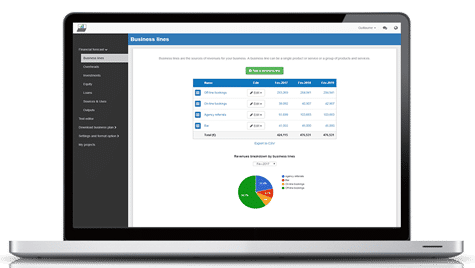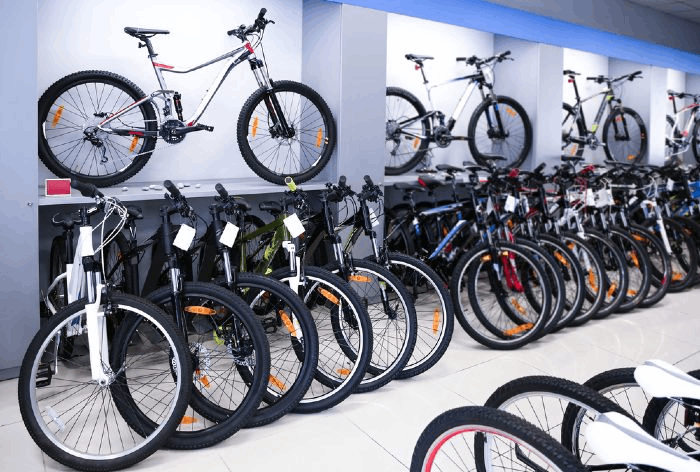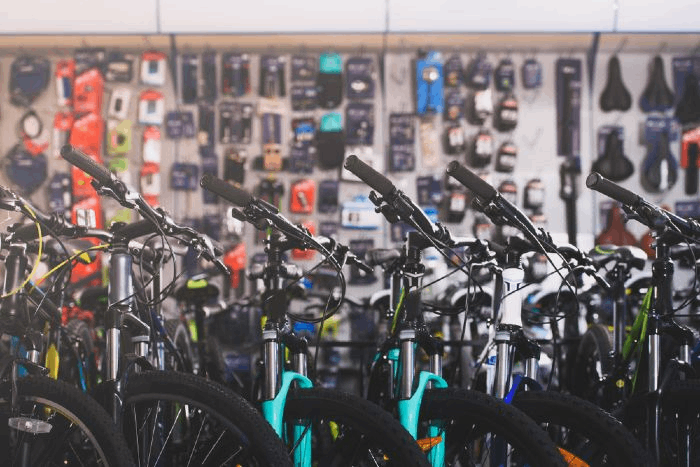How to create a financial forecast for a bike shop?
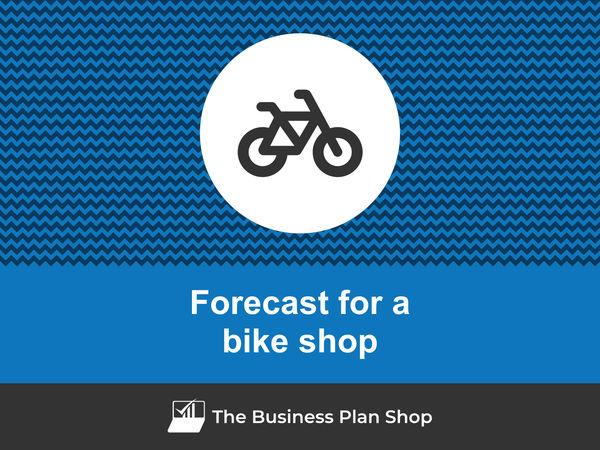
Creating a financial forecast for your bike shop, and ensuring it stays up to date, is the only way to maintain visibility on future cash flows.
This might sound complex, but with the right guidance and tools, creating an accurate financial forecast for your bike shop is not that hard.
In this guide, we'll cover everything from the main goal of a financial projection, the data you need as input, to the tables that compose it, and the tools that can help you build a forecast efficiently.
Without further ado, let us begin!
Why create and maintain a financial forecast for a bike shop?
In order to prosper, your business needs to have visibility on what lies ahead and the right financial resources to grow. This is where having a financial forecast for your bike shop becomes handy.
Creating a bike shop financial forecast forces you to take stock of where your business stands and where you want it to go.
Once you have clarity on the destination, you will need to draw up a plan to get there and assess what it means in terms of future profitability and cash flows for your bike shop.
Having this clear plan in place will give you the confidence needed to move forward with your business’s development.
Having an up-to-date financial forecast for a bike shop is also useful if your trading environment worsens, as the forecast enables you to adjust to your new market conditions and anticipate any potential cash shortfall.
Finally, your bike shop's financial projections will also help you secure financing, as banks and investors alike will want to see accurate projections before agreeing to finance your business.
Need a solid financial forecast?
The Business Plan Shop does the maths for you. Simply enter your revenues, costs and investments. Click save and our online tool builds a three-way forecast for you instantly.
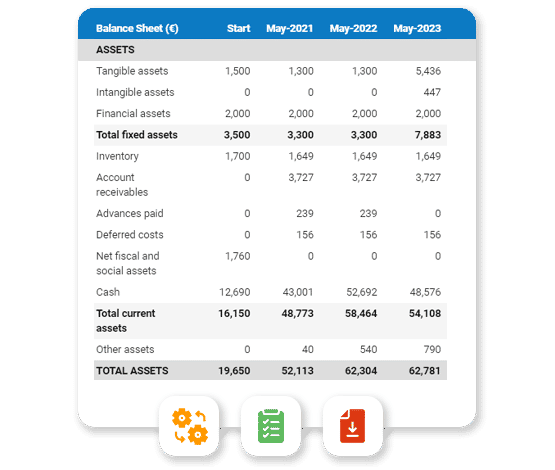
What information is used as input to build a bike shop financial forecast?
A bike shop's financial forecast needs to be built on the right foundation: your assumptions.
The data required to create your assumptions will depend on whether you are a new or existing bike shop.
If you are creating (or updating) the forecast of an existing bike shop, then your main inputs will be historical accounting data and operating metrics, and your team’s view on what to expect for the next three to five years.
If you are building financial projections for a new bike shop startup, you will need to rely on market research to form your go-to-market strategy and derive your sales forecast.
For a new venture, you will also need an itemised list of resources needed for the bike shop to operate, along with a list of equipment required to launch the venture (more on that below).
Now that you understand what is needed, let’s have a look at what elements will make up your bike shop's financial forecast.
The sales forecast for a bike shop
The sales forecast, also called topline projection, is normally where you will start when building your bike shop financial forecast.
Creating a coherent sales projection boils down to estimating two key drivers:
- The average price
- The number of monthly transactions
To do this, you will need to rely on historical data (for an existing business), market research data (for both new and existing bike shops), and consider the elements below:
- Seasonal trends: As the owner of a bike shop, you likely experience fluctuations in sales throughout the year. During the warmer months, you may see an increase in sales due to more people being interested in outdoor activities. In contrast, sales may decrease during the colder months when biking may not be as popular.
- Economic conditions: The state of the economy can have a significant impact on your bike shop's sales. During times of economic downturn, people may be less likely to make discretionary purchases, such as buying a new bike. On the other hand, during times of economic growth, people may have more disposable income and be more willing to invest in a new bike.
- Competition: The presence of other bike shops in your area can also affect your sales forecast. If there are multiple bike shops in close proximity, it may lead to price competition and potentially lower prices for customers. This could result in a decrease in your average price per transaction.
- Technology advancements: The constant evolution of technology can also impact your bike shop's sales. New bike models with advanced features may attract customers and result in higher prices per transaction. However, if your shop does not keep up with these advancements, you may see a decrease in sales as customers seek out more modern options elsewhere.
- Weather conditions: As a bike shop owner, you are likely aware of the impact weather can have on sales. Inclement weather, such as rain or extreme heat, can discourage customers from visiting your shop and making purchases. On the other hand, nice weather can lead to an increase in sales as more people are out and about, potentially looking to buy a bike.
After the sales forecast comes the operating expenses budget, which we will now look into in more detail.
Need inspiration for your business plan?
The Business Plan Shop has dozens of business plan templates that you can use to get a clear idea of what a complete business plan looks like.

The operating expenses for a bike shop
The next step is to estimate the costs you’ll have to incur to operate your bike shop.
These will vary based on where your business is located, and its overall size (level of sales, personnel, etc.).
But your bike shop's operating expenses should normally include the following items:
- Staff Costs: Salaries and wages for employees, including sales staff, mechanics, and administrative staff.
- Rent: Monthly lease or rental payments for your physical retail space.
- Utilities: Electricity, water, and gas bills for your shop.
- Inventory: The cost of purchasing bikes, parts, and accessories to sell in your shop.
- Marketing and Advertising: Expenses for promoting your business, such as print ads, digital marketing, and sponsorships.
- Accountancy Fees: The cost of hiring an accountant to manage your financial records and taxes.
- Insurance Costs: Liability insurance to protect your business and employees, as well as insurance for your inventory and equipment.
- Software Licences: Fees for software programs used to manage inventory, track sales, and process payments.
- Bike Shop Supplies: Expenses for shop supplies such as tools, cleaning products, and spare parts.
- Repair and Maintenance: Costs for maintaining and repairing bikes and equipment in your shop.
- Banking Fees: Charges for processing credit and debit card payments, as well as fees for bank accounts and transactions.
- Professional Services: Fees for legal or consulting services, such as hiring a lawyer for contracts or a consultant for business advice.
- Employee Benefits: Costs for providing benefits to your employees, such as health insurance or retirement plans.
- Rent of Equipment: If you have equipment in your shop, such as a bike repair station, you may also have a monthly rental or lease fee for it.
- Delivery and Shipping: Expenses for shipping and delivering bikes and parts to customers or suppliers.
This list is not exhaustive by any means, and will need to be tailored to your bike shop's specific circumstances.
What investments are needed to start or grow a bike shop?
Creating and expanding a bike shop also requires investments which you need to factor into your financial forecast.
Capital expenditures and initial working capital items for a bike shop could include elements such as:
- Bicycles: This includes the purchase of new bicycles to add to your inventory or to replace older models. It also includes the cost of any customizations or upgrades to existing bicycles.
- Shop Equipment: This includes any tools or equipment necessary for repair and maintenance of bicycles, such as tire pumps, bike stands, and specialized tools for different types of repairs.
- Store Fixtures: This includes the cost of display racks, shelving, and other fixtures used to showcase and organize your products in the store.
- Point-of-Sale System: This includes the cost of a computer, cash register, and any necessary software for processing sales and managing inventory.
- Delivery Vehicles: If your bike shop offers delivery services, this includes the cost of purchasing or leasing a vehicle to transport bicycles to customers.
Again, this list is not exhaustive and will need to be adjusted according to the circumstances of your bike shop.
Need a convincing business plan?
The Business Plan Shop makes it easy to create a financial forecast to assess the potential profitability of your projects, and write a business plan that’ll wow investors.
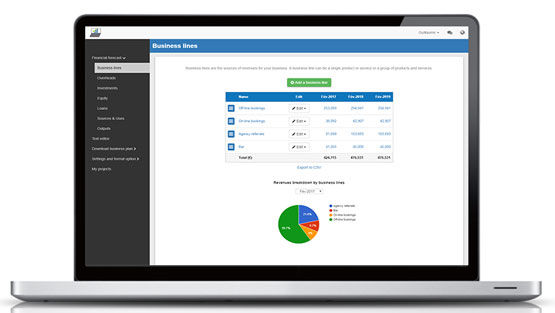
The financing plan of your bike shop
The next step in the creation of your financial forecast for your bike shop is to think about how you might finance your business.
You will have to assess how much capital will come from shareholders (equity) and how much can be secured through banks.
Bank loans will have to be modelled so that you can separate the interest expenses from the repayments of principal, and include all this data in your forecast.
Issuing share capital and obtaining a bank loan are two of the most common ways that entrepreneurs finance their businesses.
What tables compose the financial plan for a bike shop?
Now let's have a look at the main output tables of your bike shop's financial forecast.
The forecasted profit & loss statement
The profit & loss forecast gives you a clear picture of your business’ expected growth over the first three to five years, and whether it’s likely to be profitable or not.
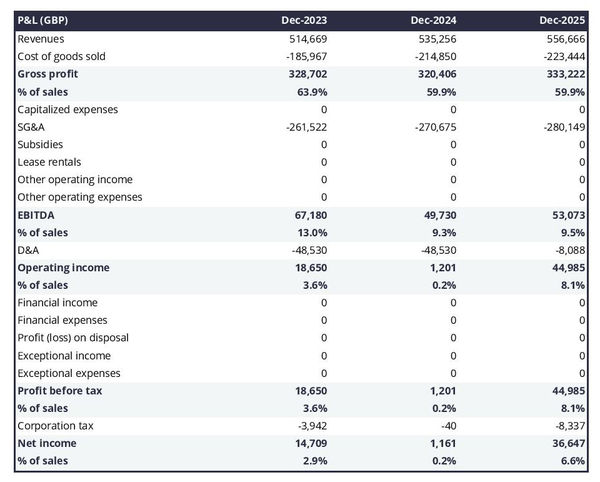
A healthy bike shop's P&L statement should show:
- Sales growing at (minimum) or above (better) inflation
- Stable (minimum) or expanding (better) profit margins
- A healthy level of net profitability
This will of course depend on the stage of your business: numbers for an established bike shop will look different than for a startup.
The projected balance sheet
The projected balance sheet gives an overview of your bike shop's financial structure at the end of the financial year.
It is composed of three categories of items: assets, liabilities and equity:
- Assets: are what the business possesses and uses to produce cash flows. It includes resources such as cash, buildings, equipment, and accounts receivable (money owed by clients).
- Liabilities: are the debts of your bike shop. They include accounts payable (money owed to suppliers), taxes due and bank loans.
- Equity: is the combination of what has been invested by the business owners and the cumulative profits to date (which are called retained earnings). Equity is a proxy for the value of the owner's stake in the business.

The cash flow projection
The cash flow forecast of your bike shop will show how much cash the business is expected to generate or consume over the next three to five years.
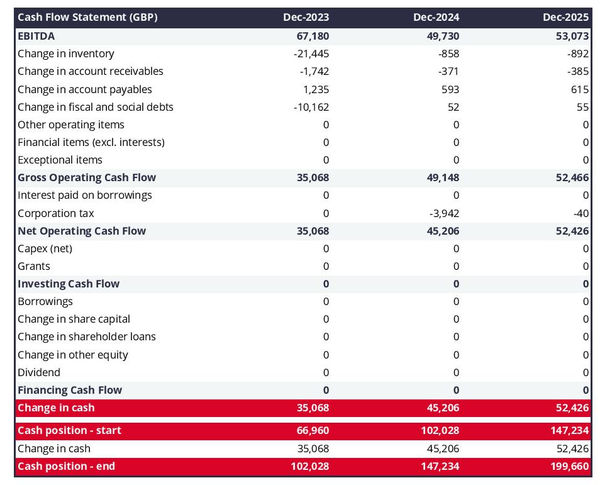
There are multiple ways of presenting a cash flow forecast but from experience, it is better to organise it by nature in order to clearly show these elements:
- Operating cash flow: how much cash is generated by the bike shop's operations
- Investing cash flow: what is the business investing to expand or maintain its equipment
- Financing cash flow: is the business raising additional funds or repaying financiers (debt repayment, dividends)
Your cash flow forecast is the most important element of your overall financial projection and that’s where you should focus your attention to ensure that your bike shop is adequately funded.
Note: if you are preparing a financial forecast in order to try to secure funding, you will need to include both a yearly and monthly cash flow forecast in your bike shop's financial plan.
Need a solid financial forecast?
The Business Plan Shop does the maths for you. Simply enter your revenues, costs and investments. Click save and our online tool builds a three-way forecast for you instantly.

Which tool should you use to create your bike shop's financial projections?
Building a bike shop financial forecast is not difficult provided that you use the right tool for the job. Let’s see what options are available below.
Using online financial forecasting software to build your bike shop's projections
The modern and easiest way is to use an online financial forecasting tool such as the one we offer at The Business Plan Shop.
There are several advantages to using specialised software:
- You can easily create your financial forecast by letting the software take care of the financial calculations for you without errors
- You have access to complete financial forecast templates
- You get a complete financial forecast ready to be sent to your bank or investors
- You can easily track your actual financial performance against your financial forecast, and recalibrate your forecast as the year goes by
- You can create scenarios to stress test your forecast's main assumptions
- You can easily update your forecast as time goes by to maintain visibility on future cash flows
- You have a friendly support team on standby to assist you when you are stuck
- It’s cost-efficient and much cheaper than using an accountant or consultant (see below)
If you are interested in this type of solution, you can try our projection software for free by signing up here.
Calling in a financial consultant or chartered accountant
Outsourcing the creation of your bike shop financial forecast is another possible solution.
This will cost more than using software as you can expect as your price will have to cover the accountant’s time, software cost, and profit margin.
Price can vary greatly based on the complexity of your business. For a small business, from experience, a simple three-year financial forecast (including a balance sheet, income statement, and cash flow statement) will start at around £700 or $1,000.
Bear in mind that this is for forecasts produced at a single point in time, updating or tracking your forecast against actuals will cost extra.
If you decide to outsource your forecasting:
- Make sure the professional has direct experience in your industry and is able to challenge your assumptions constructively.
- Steer away from consultants using sectorial ratios to build their client’s financial forecasts (these projections are worthless for a small business).
Why not use a spreadsheet such as Excel or Google Sheets to build your bike shop's financial forecast?
Creating an accurate and error-free bike shop financial forecast on Excel (or any spreadsheet) is very technical and requires both a strong grasp of accounting principles and solid skills in financial modelling.
Most entrepreneurs lack the expertise required to create an accurate financial forecast using spreadsheet software like Excel or Google Sheets. As a result, it is unlikely anyone will trust your numbers.
The second reason is that it is inefficient. Building forecasts on spreadsheets was the only option in the 1990s and early 2000s, nowadays technology has advanced and software can do it much faster and much more accurately.
This is why professional forecasters all use software. With the rise of AI, software is also becoming smarter at helping us detect mistakes in our forecasts and helping us analyse the numbers to make better decisions.
Finally, like everything with spreadsheets, tracking actuals vs. forecasts and updating your forecast as the year progresses is manual, tedious, error-prone, and time-consuming. Whereas financial forecasting software like The Business Plan Shop is built for this.
Need a convincing business plan?
The Business Plan Shop makes it easy to create a financial forecast to assess the potential profitability of your projects, and write a business plan that’ll wow investors.

Use our financial forecast templates for inspiration
The Business Plan Shop has dozens of financial forecast examples available.
Our templates contain both a financial forecast and a written business plan which presents, in detail, the company, the team, the strategy, and the medium-term objectives.
Our templates are a great source of inspiration, whether you just want to see what a complete business plan looks like, or are looking for concrete examples of how you should model financial elements in your own forecast.
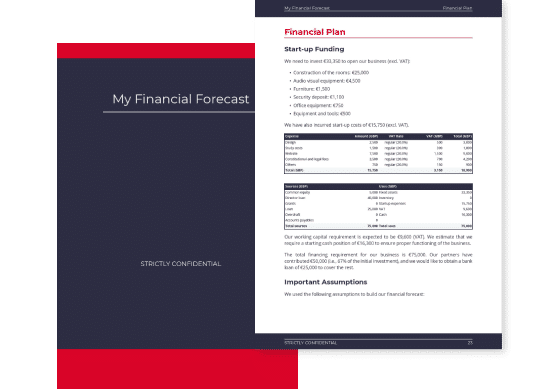
Takeaways
- A financial forecast shows expected growth, profitability, and cash generation metrics for your bike shop.
- Tracking actuals vs. forecast and having an up-to-date financial forecast is key to maintaining visibility on your future cash flows.
- Using financial forecasting software is the modern way of creating and maintaining financial projections.
We hope that this guide helped you gain a clearer perspective on the steps needed to create the financial forecast for a bike shop. Don't hesitate to contact us if you have any questions!
Need inspiration for your business plan?
The Business Plan Shop has dozens of business plan templates that you can use to get a clear idea of what a complete business plan looks like.

Also on The Business Plan Shop
Know someone who runs a bike shop? Share our business guide with them!

